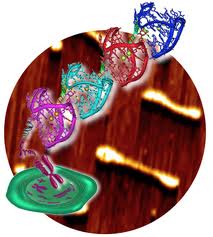They are compared with the plastic tip on shoelaces because they prevent oppfrynsing of chromosomes. Telomeres in young birds gave hints about how much life they would have, in a new study.
Telomeres-repeated sequences at the end of our chromosomes, and compared with a piece of shoe laces, because they prevent chromosome ends get worn out and sticking to each other.
Telomeres in white blood cells are becoming shorter over time, and is often used as a marker of biological aging.
Now, scientists have seen that telomerlengden at sebrafink-kids can give a good indication of how old they are going to be.
- Basically, this is interesting and surprising findings, if that's how they have managed to predict the life expectancy of an organism from the telomeres, professor of biology at the Department of Laboratory Medicine, Children's and Women's Health.
Clear predictions
Shortening of telomeres has been linked to both normal aging and various degenerative diseases in humans.
In 2003, researchers published a study in The Lancet in which they examined the 20 year old blood samples, where they found that those who had the longest telomeres had the best chance of living 15 years after the age of 60
To determine whether telomeres at a young age could provide an indication of how long an individual would live, was Professor Pat Monaghan, University of Glasgow and colleagues in other words for a bunch of unsuspecting sebrafinker.
The measured telomerlengden in birds since they were they were 25 days old and lives. Birds' natural life expectancy varied greatly, from 210 days to nearly nine years on the wings.
The birds that had the longest telomeres when they were little feather balls in the nest, also lived longer.
Telomeres became progressively shorter with age in all of them, but those who lived the longest, had the longest telomeres throughout life.
From sebrafink to human
Researchers found that people who exercised had much longer telomeres than those who exercised little.
Emphasizes that there are many factors that contribute to the life expectancy of a person - both genetic and environmental.
- Genetically speaking, we know that among other things, there are some severe mutations in chromosomes that affect life expectancy..
- If the telomeres appear to have any impact on life expectancy, we must begin to look at them on an equal footing with other genetic factors for longevity, he says.
Hereditary?
According to Monaghan and his colleagues behind the new study, it is still unclear why some of sebrafinkene had such a different length of telomeres.
Klungland believe telomerlengden probably is heritable, even among humans.
- You inherit telomeres from your parents, and there is a genetic variation in line with other genetic variations, he says.
Part of the reason that telomeres are associated with aging, may have something with the stability of chromosomes to do.
- If there is anything that is broken in a chromosome, so it is natural to think that what happens on the ends, where telomeres are, he says.
Here, researchers looked at telomeres in sebrafink. Is it unnatural to draw a correlation to human telomeres and aging from here?

- It is not made out of thin air that they have examined it.





